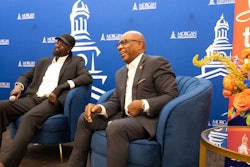While college tuitions keep rising, students and families continue to grapple with how to cover education costs. But those who would normally turn to private loans as a source for financial aid assistance will find that this source is becoming more scarce.
In a worsening economy banks aren’t loaning money to one another let alone struggling middle-class families, who often turn to private lenders as well as the federal government to help cover college expenses.
“They’re having a terrible time getting access to private student loans,” says Becky Timmons, assistant vice president for government relations at the American Council on Education. “The private student loan market is part and parcel of the lending environment banks worldwide are facing. Private lenders are pulling out of the program in lots of cases and we expect more of that.”
Just like home and auto lenders, private financial aid lenders are tightening eligibility requirements, including now requiring more students to have co-signers, Timmons says.
Even before the current economic crisis, private loans were on the decline, reversing years of steady growth, according to a report released this week by the College Board, a non-profit organization that seeks to help more students get a college education. These loans accounted for 23 percent of all education loan borrowing in the past year, the report states.
Federal loans have more preferable conditions than private loans, college aid advocates say. But federal aid is often not enough.
The College Board report shows that public financial aid has increased 5.5 percent after adjusting for inflation, while tuition at four-year public colleges and universities has climbed 6.4 percent to $6,585.















